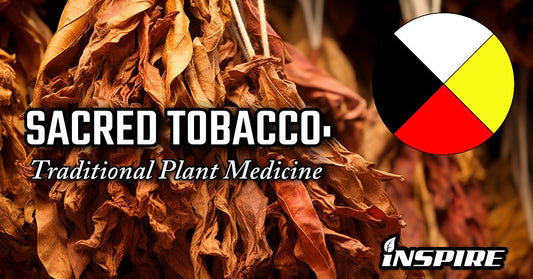Written By: Zach Champ
Connect with me on Instagram!

HISTORY OF DABS
The first dabbing process was discovered and practiced in the 1970s with hash.
Hashish is a potent form of concentrated cannabis where the flowering parts of the cannabis plant are compressed and processed into a resin-like substance that is smoked, vaped, or consumed.

Hash is in many ways the original cannabis concentrate!
The American military and government pioneered a lot of research into cannabinoids and cannabis extracts during and after WWII that would later be adopted by illicit chemists and drug trafficking groups.
This research was done under the supervision of the Office of Strategic Services, and later under the Central Intelligence Agency.
The goal of this research was to determine marijuana’s effectiveness as a “truth serum” when used as an aid for the interrogation of prisoners of war.
Later experiments would involve passing out laced marijuana cigarettes amongst the hippie and counterculture scene during the 1970’s as part of projects like MK Ultra.
In fact, some people theorize that many of the early drug trafficking operations during the hippie movement of the 1960s onward were managed by or indirectly guided by undercover agents of agencies like the DEA, the CIA, and etc.

It is believed that modern cannabis concentrates such as BHO (Butane Hash Oil) were created through the research and distribution conducted by chemist and cult member Ronald Stark of the 1970s/1980s acid group the Brotherhood of Eternal Love.
The group invented BHO primarily to make it easier to smuggle large quantities of hashish into the US from Afghanistan. The Brotherhood realized that by converting the hashish into an oil, it would be easier to hide and import in large quantities.

HOW TO SMOKE DABS
In the realm of cannabis consumption, dabbing has gained substantial popularity due to its stupefying potency and strength. In this guide, we will navigate through the essentials of dabbing, discussing both traditional techniques and contemporary electronic options.

Let's delve into the art and science of smoking dabs!
The classic and time-tested method of smoking hash and dabs is the Hot Knife.
Hot Knives are simply metal knives that are heated red hot over a stove. Hash or dabs are then applied to the hot surface of the knife and then using a straw or a plastic bottle, the vapors from the lit material are inhaled.
The first dab rigs to emerge within the cannabis scene included “swing-skillet” and “vapor curve” attachments. These smoking accessories consist of a titanium heating pan that hangs below a curved glass tube. Though basic, these setups paved the way for the development of more advanced dab rigs.

Dabbing nails are typically made of glass, quartz, or ceramic.
Each material offers distinct benefits – quartz maintains temperatures at specific points, ceramic ensures even heat distribution, and titanium is valued for its durability.

Atomizers, available as disposable or replaceable units, come in quartz, titanium, and ceramic variants.
Ceramic atomizers excel in heat dispersion, while quartz and titanium focus on specific heat points.

Modern dabbing has seen the development and rise of electronic rigs, offering enhanced precision and convenience.
Electronic Rigs like Dr.Dabber and Puffco are widely popular and considered to be the best on the market currently.
INSPIRE APPROVED ELECTRONIC RIGS:

Dr. Dabber Boost Evo, is the World’s first portable electronic dab rig featuring a specially made quartz atomizer and seven temperature settings. The Dr. Dabber is INSPIRE approved! It’s our primary electronic rig and we use it daily. Its powerful and efficient battery will last several dabbing sessions before requiring a charge via a USB-C cable.

Puffco Peak is a widely recognized and industry celebrated electronic rig that has won several awards including High Times “Best Vaporizer” category several times in a row. The Puffco Peak’s design features premium water filtration, and is powered by four precision heat settings controlled via the smartphone app. Haptic feedback alerts users to when the device is heated and ready to smoke!

TYPES OF DABS
Concentrates come in a variety of forms, but most commonly are processed as budder, shatter, and wax.

Concentrates are created through extraction processes that separate cannabinoids from the plant material. Different methods yield varying consistencies and effects.
The two most prominent categories are Live Resin and Live Rosin, with each embracing distinct techniques that use either solvent based extractions or solventless extraction methods.


Live Resins utilize solvents like ethanol, butane, propane, or CO2 to retain the plant's original flavors and aromas. The result is a potent concentrate that encapsulates the essence of the living plant.
Budder and other forms of Butane Hash Oil (BHO) are forms of Live Resin.

Likewise, Live Rosins use a solventless method of applying extreme heat and pressure to the cannabis plant. This extraction method yields a pure, potent, and flavorful concentrate.

Among the array of cannabis concentrates, one form stands out as the pinnacle of intensity and authenticity: Hash Rosin. Hash Rosin is the most intoxicating and most renowned form of Live Rosin.
Hash Rosin is a solventless extraction technique that resonates with those who seek an unadulterated cannabis experience.

Unlike other concentrate methods that might involve solvents, Hash Rosin relies solely on heat and pressure to extract the coveted resin from the plant material.
It begins with selecting premium-quality cannabis flowers, which are then meticulously washed or placed in an ice bath to eliminate any contaminants.
The washed plant material is then subjected to controlled heat and pressure between metal plates, inducing a chemical transformation that liberates the resin from the trichome glands.
This process ensures that no foreign substances find their way into the final product, preserving the natural qualities of the cannabis plant.

One of Hash Rosin's most alluring attributes is its rich terpene profile. Terpenes are organic compounds responsible for the diverse aromas and flavors found in cannabis.
Hash Rosin's extraction process gently preserves these aromatic compounds, resulting in a concentrate with a robust and authentic flavor. Often described as tasting 'earthy,' Hash Rosin offers a flavor journey that mirrors the plant's natural essence.
NOT ALL DABS ARE THE SAME!
The quality of dabs and cannabis concentrates can vary, even if they are the same type of concentrate. Cannabis processors use a slew of tricks and conditioning to ensure consistency and reliable smoking experiences with their concentrates.

Examples of this can include water and ice bath filtration, as well as color remediation, both which are techniques that enhance the appearance of dab products.
By removing impurities and refining color, these processes elevate the visual appeal of concentrates while maintaining their quality.

IS IT SAFER TO SMOKE DABS OR FLOWER?
It is crucial to note that individual responses to cannabis use, including dabbing, can vary significantly. Factors such as genetics, frequency and duration of use, dose, and personal susceptibility all play a role in determining the potential long-term effects on an individual.

If you have concerns about the long-term effects of dabbing or cannabis use, it is advisable to consult with a healthcare professional or substance abuse specialist who can provide personalized guidance and support based on your specific circumstances and health needs.
When comparing smoking dabs (concentrated cannabis extracts) to smoking flower (dried cannabis buds), there are a few factors to consider regarding potential health risks:
-
Potency: Dabs typically have higher levels of THC (the psychoactive compound in cannabis) compared to flower. This means that dabs can deliver a more potent and immediate effect. However, the higher THC concentration also increases the risk of adverse effects, such as anxiety, paranoia, and impaired coordination.
-
Inhalation: Both smoking dabs and flower involve inhalation of combusted or vaporized compounds. While smoking any form of cannabis can produce respiratory irritants and toxins, the higher temperatures associated with dabbing can lead to more intense and potentially harsher inhalation. This may increase the risk of respiratory symptoms and lung irritation.
-
Purity and Contaminants: Dabs are typically produced through extraction processes that aim to concentrate cannabinoids, but the final product's purity can vary. If not properly produced or handled, dabs can contain residual solvents or contaminants that may pose health risks when inhaled. Flower, on the other hand, is less processed and generally has fewer concerns regarding purity.
- Tolerance and Dependency: The higher potency of dabs can contribute to faster tolerance buildup and potential dependency. Frequent or heavy use of highly concentrated cannabis products like dabs may lead to increased tolerance, requiring larger amounts to achieve desired effects. This can potentially increase the risk of dependency or misuse.

ARE THERE LONG-TERM HEALTH EFFECTS TO SMOKING DABS?
The long-term effects of smoking dabs (highly concentrated cannabis extracts) are not yet well-studied, as the popularity of dabbing is relatively recent, and scientific research takes time to accumulate.
However, we can discuss potential concerns based on what is currently known about cannabis use in general.
-
Respiratory Health: Like smoking any form of cannabis, smoking dabs can potentially have negative effects on respiratory health. Inhaling combusted substances can irritate the lungs and airways, leading to symptoms such as chronic bronchitis, coughing, wheezing, and phlegm production. Long-term and heavy cannabis smoking may also increase the risk of respiratory infections and chronic lung diseases.
-
Cognitive Function: Regular and heavy cannabis use, regardless of the form, has been associated with potential effects on cognitive function. Chronic and heavy use of high-potency cannabis products, such as dabs, may have a greater impact. Research suggests that long-term cannabis use can affect attention, memory, and executive functions, particularly when use begins during adolescence or continues into adulthood.

-
Cannabis Use Disorder: Regular and heavy use of cannabis, including dabs, can lead to the development of cannabis use disorder (CUD). CUD is characterized by problematic patterns of cannabis use, including tolerance, withdrawal symptoms, difficulty controlling use, and negative impact on daily life. It is important to be mindful of potential dependency and addictive tendencies associated with cannabis use.
- Mental Health: Cannabis use, including dabbing, has been linked to an increased risk of mental health issues in some individuals. While cannabis can have therapeutic effects for some, it can also contribute to mental health conditions such as anxiety, depression, and psychosis. The risk may be higher in individuals predisposed to or with a history of mental health disorders.
It's worth noting that there is ongoing research exploring the long-term health effects of different cannabis consumption methods, including smoking flower and dabbing.
However, current evidence suggests that both smoking flower and dabbing have associated health risks, and moderation and harm reduction practices should be followed.

It's important to prioritize harm reduction strategies when choosing to use cannabis. Alternatives to smoking, such as vaporization or edible consumption, may be considered to minimize potential respiratory risks.
Additionally, consulting with a healthcare professional or cannabis specialist can provide personalized guidance based on your specific health needs and circumstances.








